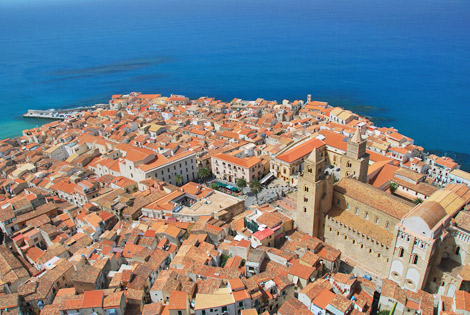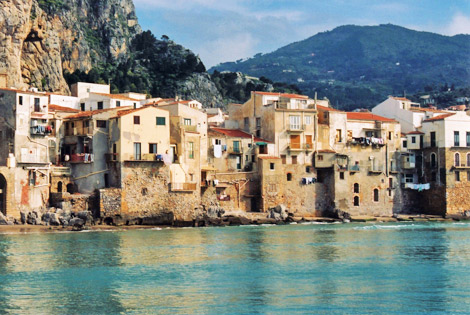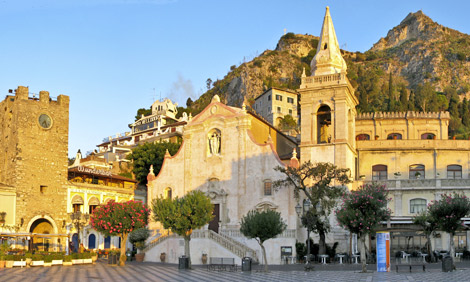Sicily
Sicily is located in Southern Italy and it is the biggest island of the Mediterranean Sea. More than 5,000,000 inhabitants live there. The ancient name of Sicily was Trinacria, meaning "consisting of three angles". Sicily map is very heterogeneous since it has 9 provinces. One of them is Trapani.

This town, called Drepanon by the Greeks, is lapped by the Mediterranean Sea and has got the shape of a sickle. The Lygny Tower, an overshawding watchtower built in 1761 by Spaniards, adorns the town and houses the Prehistory Museum. In the past, the Mediterranean Sea was rich in coral which was a source of wealth. Nowadays the coral industry has declined. The precious coral works contributed to the popularity of this town since the second half of the 16th century. Visitors can admire remaining coral works at the Pepoli Museum, while in the Santuario dell'Annunziata visitors can find a 14th-century marble statue of Madonna of Trapani. In the old part of the centre, visitors can admire the Church and College of Jesuits, the Cathedral of San Lorenzo which houses a Crucifixion attributed to the Flemish painter Van Dyck, the Palazzo Cavarretta which houses the old Trapani senate; and, finally, the Church of Santa Maria del Gesù with a "Madonna and Child" by Andrea della Robbia.
Few miles away from the town, tourists will be enchanted by a memorable view: the Via del sale (the salt road) with its mills and heaps of salts. The isle of Mozia lies in front of Marsala. It was an important Phoenician and Carthaginian settlement within the Mediterranean area with a strategically important position as it was located very close to the powerful Carthage.

Segesta is renowned city all over the world for two sights: the temple and the Theatre. It is often mistaken for Selinunte, a historical sight which was founded by the Greeks in the second half of the 7th century BC and represents one of the most important archaeological parks of the Mediterranean Sea. Its remains are evidences of the Sicilian civilization developed in the 4th and 5th centuries BC. The natural reserve called Riserva naturale dello Zingaro is composed of narrow paths and represents one of the most intact Mediterranean ecosystems.
The small island in the middle of the route between Sicily and Tunisia (Africa) is Pantelleria. Its black stones made it famous as the "precious black pearl of the Mediterranean Sea". Far from its shores and waters, visitors will be enchanted by its monuments like the neolithical burial-ground called Sesi which is the unique remain in the Mediterranea Sea dating back to 5000 years ago.

Sicily is a touristic destination where visitors can find various hotels of any type. The good thing of the hotels in Sicily as well as the hotels of the small islands around it, is the fact that they are close to the sea and have a view to it. One can find friendly and cosy accommodation places, luxurious or even affordable to low budget travelers, near the city centre and close to its main attractions.
